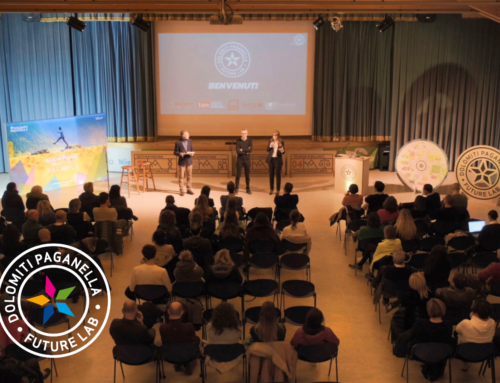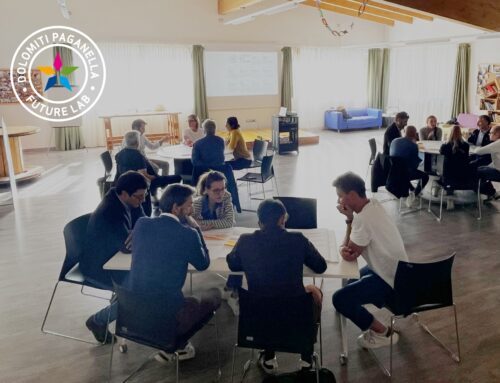The principles that inspire our new destination narrative have been officially presented. These include a marked change in perspective and greatly revised communication policies, calling for effective teamwork from all the subjects in play.
Last 22 June, in the Molveno congress hall, we saw the official launch of the second main pillar of the actuation stage of “Dolomiti Paganella Future Lab” (known as “Future Lab 2.0”). This is the new Dolomiti Paganella destination narrative.
It combines with projects already completed (“Green Team”, “New Generation Tourism Commission”, “Manual of Good Practices”, “Dolomiti Paganella Calculator”), and those still underway (“Carrying Capacity of Lake Molveno”, “Innovating the Family Product”, “Liveability for Workers and Residents”), for the concrete implementation of the ideas formulated and shared with the local community in the Dolomiti Paganella Future Lab “Values Charter”.
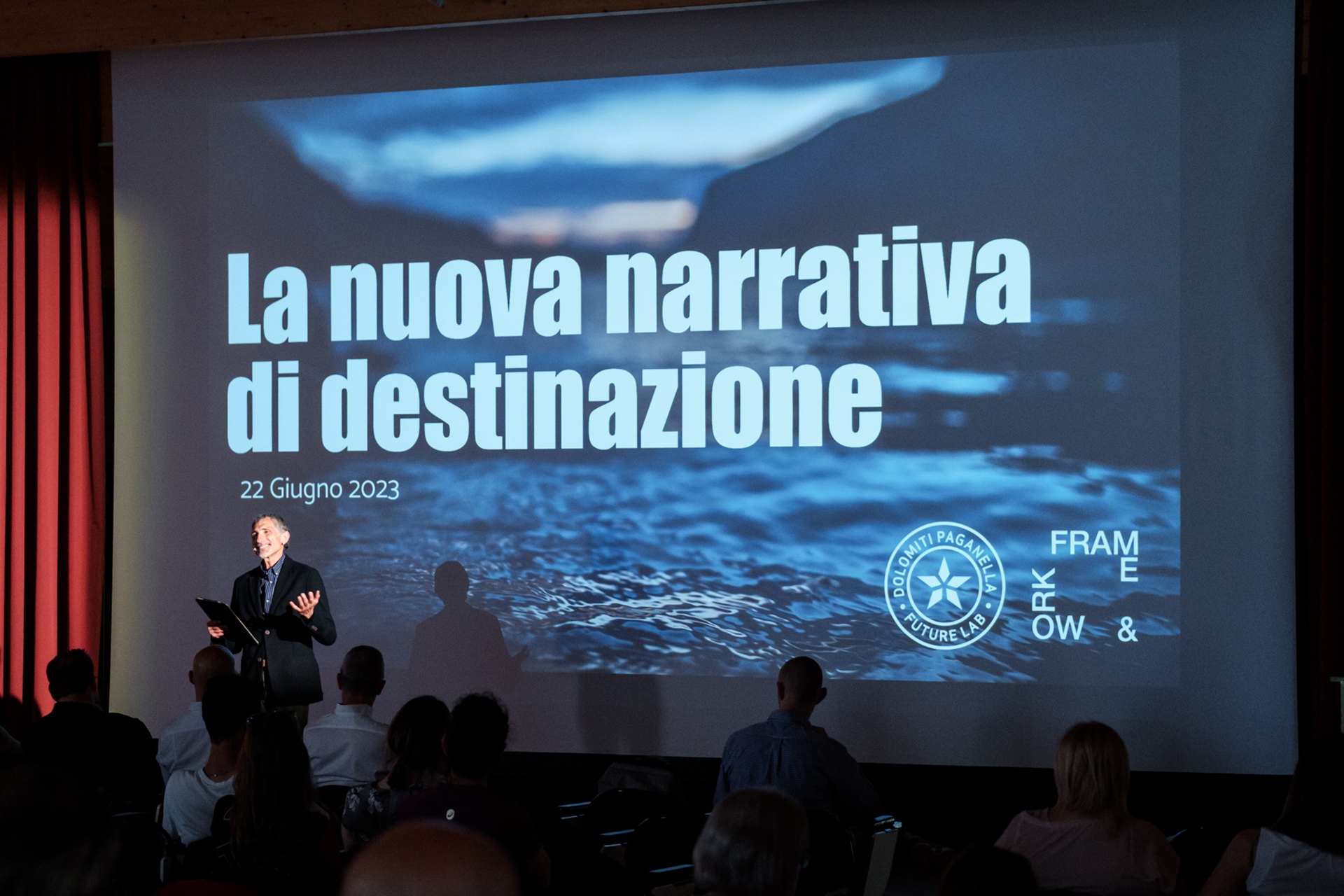
The guiding principles of the new destination narrative (derived from the successful work of the team that includes the Danish consultancy company “Frame & Work”, led by Emil Spangenberg, and experts from the Dolomiti Paganella DMO) were presented to our local operators, together with numerous local authorities. The councillor for provincial tourism, Roberto Failoni, also attended, testifying to the significant interest and support from the Autonomous Province of Trento for the Future Lab initiative.
It is considered by experts, scholars, and sectorial technicians as one of the most innovative projects of recent years, attracting considerable attention on a national and international scale in the media and in various prestigious universities and research bodies.
With the help of the director of the DMO, Luca D’Angelo, acting as interpreter, Emil Spangenberg himself presented the new future communications policy. He started, first of all, from the main “source” that will feed the new information stream for the resort narrative. This is a shared pact, offered to everyone, in which all of us must consider ourselves guests in our mountains (which are therefore not a theatrical stage-set), making us all equally responsible for the living habitat they comprise.
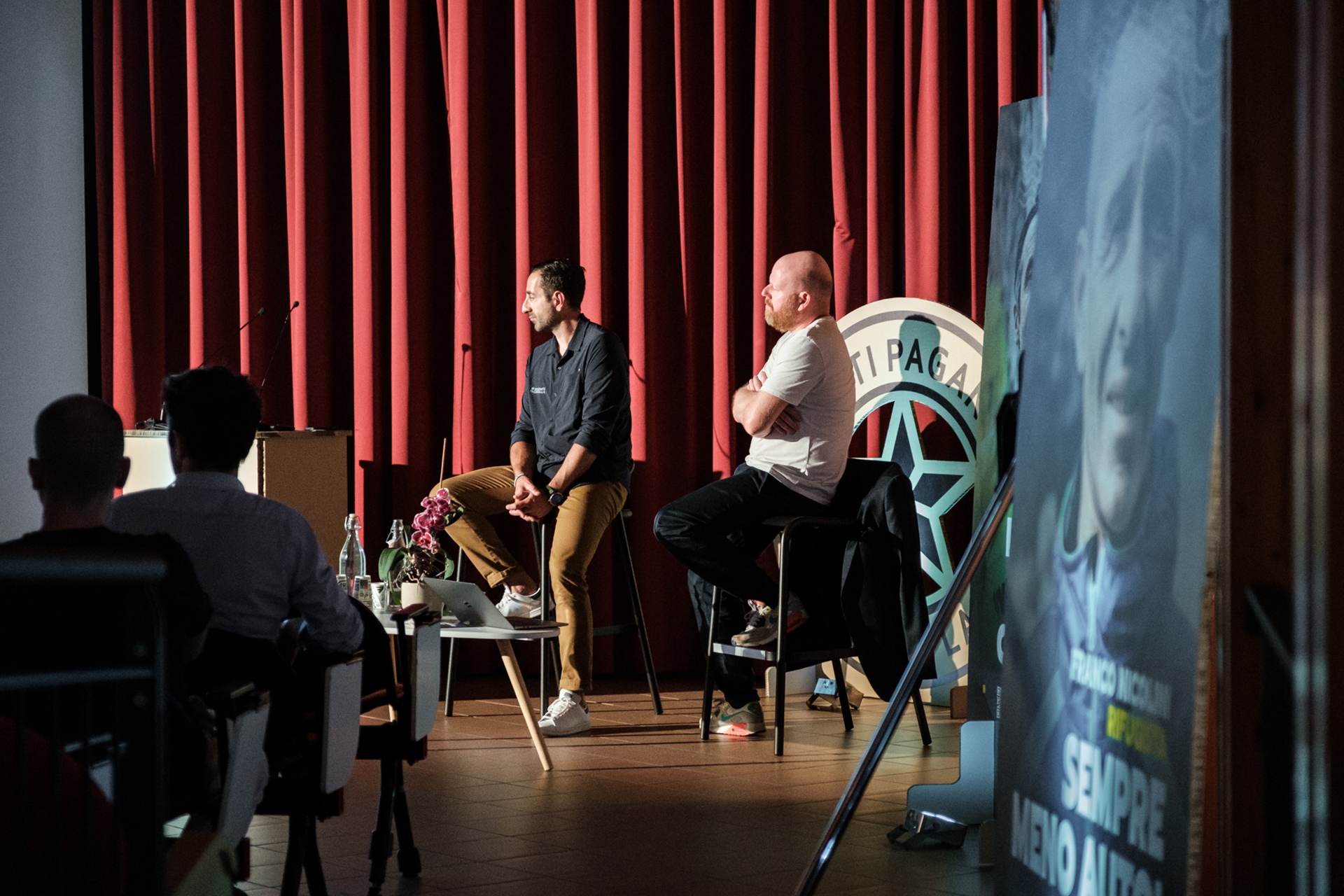
The shared pact derives from the “Values Charter” and so has a strong ethical basis. It is intended to “resonate” like an echo in all of us, including guests, calling for personal contributions that are active, concise, and valuable.
The pact also involves a fundamental change in perspective. This requires abandonment of communications driven by the conventional principle of market demographics, moving instead gradually towards communications inspired by the desire to make our guests feel part of our community.
In practice this means reaching people who share and reflect our own values, while also encouraging more responsible behaviour amongst visitors who already know and frequent our area.
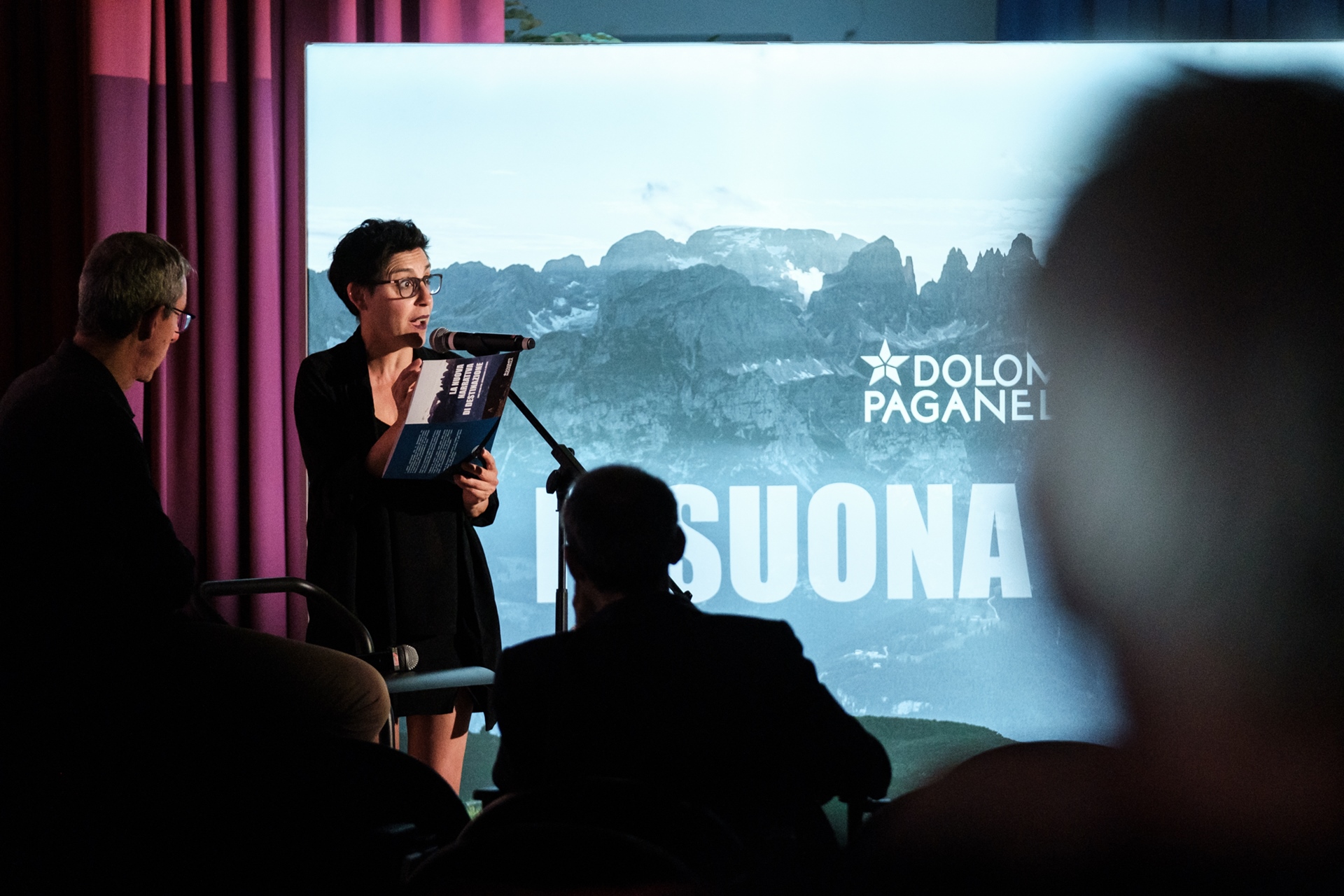
Starting from today we move away from communications that simply delineate a product, and start working towards a narrative of values, stories, and people. This “potent” shift in style and perspective will require guidelines for its implementation, principles that will ultimately lead to the definition of a resort brand, which should not be confused with a logo for the same, but rather the essence of the place.
This essence will derive from five specific principles to govern the new narrative style. These are that we are all close to each other and connected; that it is necessary to reveal the “backstage” stories of the work that makes our visitors’ holidays possible; that innovation is our strongest tradition; that we are all part of this story, with people in centre stage; and that we represent more than just mountains, but instead a place where it is always wonderful to live, “regardless of season”).
Our location should resonate in every one of us, as reflected in the new brand name “Dolomiti Paganella – Risuona con te” (Dolomiti Paganella – Resonates with you”).
Alongside this radical shift in perspective and style, there is another equally important change in the management of our narrative process.
During the evening presentation in Molveno, special emphasis was placed on who will perform each specific thing, how and when it is done, starting from the fundamental supposition that this is not just a DMO project, but an initiative of the entire destination.
Every active player in the field (from accommodation providers to tourist operators, from systemic consortiums and organizations to the DMO itself) needs to play an important, well defined role, acting in harmony and moving effectively together towards shared goals. This may be among the biggest challenges of the project, to be addressed at the end of the summer season. Our blog will keep you up to date on that.
aaa









